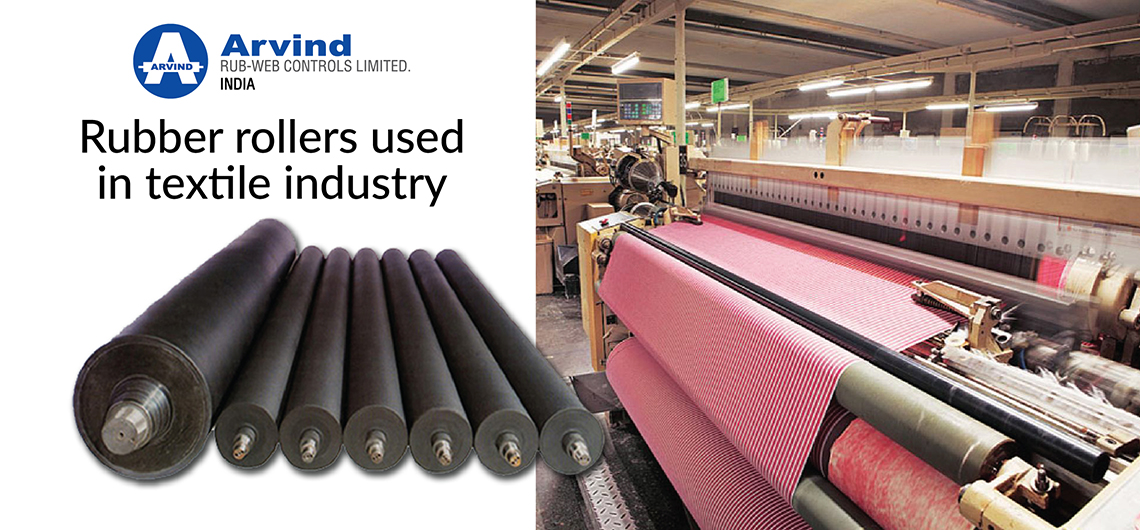
The industrial rubber rollers are designed and engineered for a wide range of manufacturing processes. In this industrial blog, we are going to highlight textile rubber rollers, their unique features, and their application in the textile industry.
The manufacturing industry-centric rubber rollers for the textile industry are designed for applications that require a high degree of contact and holding friction. Furthermore, it is ideal in material processing applications that require a soft touch.
The industrial product is usually cylindrical or spherical. It is a mechanized machine that rolls or rotates. Let's understand this with a few examples, a small spoke less wheel or like a roller or caster.
The manufacturing process of textile rubber rollers
A typical manufacturing process of rubber rollers for textiles comprises various rubber fabrication steps. It can be carried out by any of the methods, including plying method, extrusion, casting, and die press.
Prominent properties of the rubber rollers for the textile industry
-
It offers a high coefficient of friction
-
It can swiftly return to its original shape and dimension, even when its shape gets distorted during the manufacturing process
-
Offers resistance to chemical substances
-
It acts as a shield and protects the roller core and shaft
-
It prevents damages that may occur by scratching and bumping
-
The product has the competency to overcome and compensate for the small changes in machine precision
Salient features of a quality-driven product
As an owner of a textile company, you seek textile rubber rollers that are identified with brilliant features, including easy to install, low maintenance, durable, dimensionally accurate, sturdy design, and easy to install among others.
Designs & Dimensions
Rubber rollers for textiles are available in a wide range of designs and dimensions. Depending on your manufacturing process requirements, you can choose the roller.
Processes
All the textiles that we see all around us are made up of fibres. The fibres are arranged and knitted in different ways during the production process to manufacture the desired strength, durability, appearance, colour, and texture.
Textile rubber rollers are used during the production cycle for different types of processes, including:
-
Dyeing Mangle (Top, Bottom Anti Deflection Roller & Drive Roller)
-
Sneter (Top, Bottom Drive Roller & Guide Roller)
-
Denim Sizing (Top, Equiv-Pressure Rubber Roller & Bottom Anti Deflection Tubber Roller & S.S. Fluted Roller)
-
Dyeing Range (Top Rubber Roller & Bottom Ebonite Roller)
-
Yarn & Cloth Mercerizer (Top & Bottom Nip Roller & Tank Roller)
-
Soapper
-
Dyeing Jigger (Ebonite & Rubber Roller)
-
Jumbo Jigger (Ebonite & Rubber Roller)
-
Share-Shakker (Main Pressing Roller Roller)
-
Sizing (Press Rubber Roller & Steel Roller)
-
Flat-Bed Printing (Main/Dummy Ebonite Roller & Rubber Pressure Roller)
-
Rotary Printing (Pressure Rubber Roller & Rubber Exposing Tube)
-
Bleaching (Squeezing Rubber & Ebonite Rubber)
-
Silicate (Rubber, P.U., Ebonite & Steel Roller)
Types of textiles
Industrial rubber rollers are integral to the textile industry as they are used for a wide range of applications. The product is used for different types of fabrics, including:
-
Synthetic
-
Cotton
-
Blended fabric
-
Denim
-
Suitings
Conclusion
Dimensional accuracy and quality of the product make the difference in production output. Therefore, it makes sense to get the rubber rollers for textile from leading manufacturers of rubber rollers. Never compromise with the quality. There is no dearth of rubber rollers manufacturers in Ahmedabad, India. In this era of technology, you can get in touch with renowned manufacturers from the comfort of your home or office.


